.google nerds. grassy mornings. green. life's lessons. simple follies. starlit.
Don't wanna be here? Send us removal request.
Text
Every moment in the OVA was so perfectly adapted to the movie... (In my opinion ofc) I cried so much haha.
Kasumi did an amazing job playing Tomoe. 💔
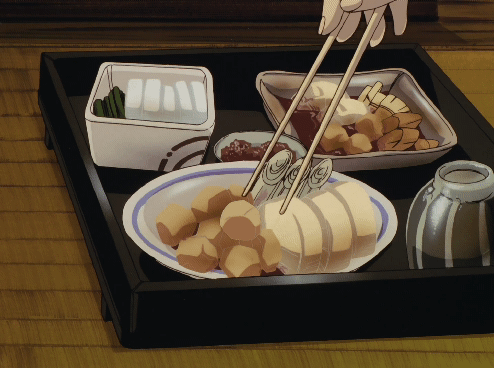
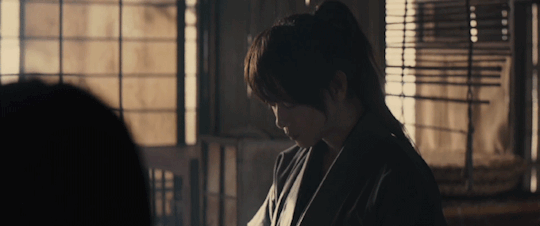
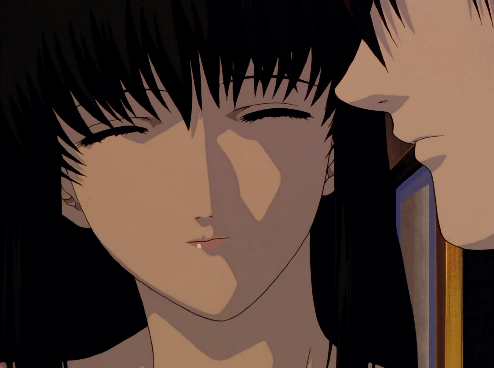
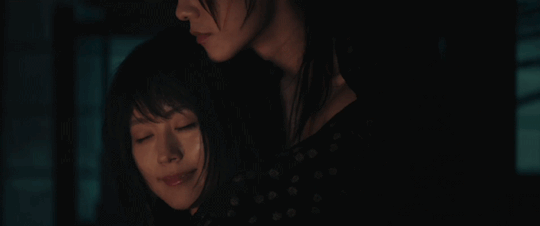
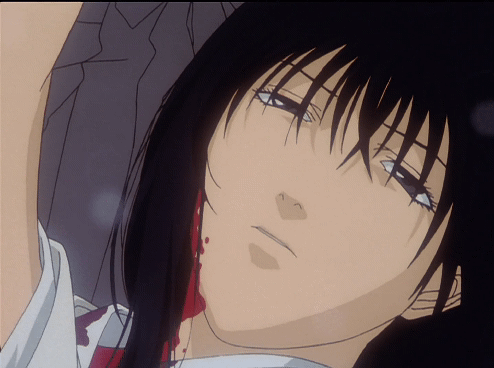
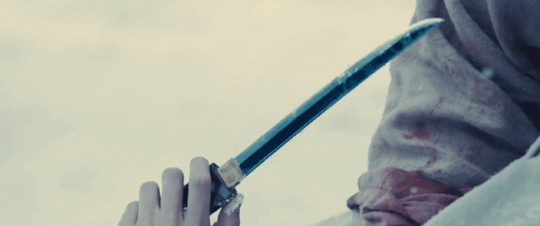

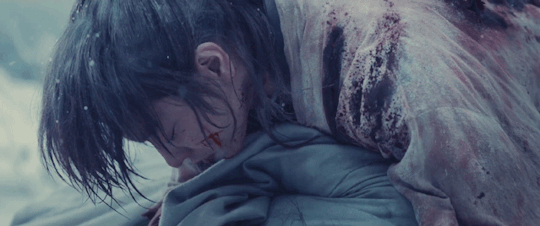
Also, this scene is absolutely beautiful!! 😍 I really love Tomoe x Kenshin. My otp forever!❤
178 notes
·
View notes
Text
What Blissymbolics can teach us about emoji
Blissymbolics were developed by Charles Bliss in the 1940s as a set of fixed symbols that could be used as a form of international communication. I first came across Blissymbolics in this 2010 International Linguistics Olympiad puzzle, which can be a fun way to figure out how they work.

Above is the sentence “I want to go to the cinema” in Blissymbols, from the Wikipedia page.
Although they never had the kind of reach Bliss was hoping for, they were used as a communicative aide with children who had speech difficulties. I can’t do the story of Blissymbolics full justice. You can read about it in Arika Okrent’s In the Land of Invented Languages, or listen to this beautiful story on RadioLab. Here’s the potted version:
Since the 1960s/1970s, Blissymbols have become popular as a method to teach disabled people to communicate. In 1971 Shirley McNaughton started a pioneer program at the Ontario Crippled Children’s Centre (OCCC), aimed at children with cerebral palsy, from the approach of augmentative and alternative communication (AAC). According to Arika Okrent, Bliss used to complain about the way the teachers at the OCCC were using the symbols, in relation with the proportions of the symbols and other questions: for example, they used “fancy” terms like “nouns” and “verbs”, to describe what Bliss called “things” and “actions”.[5] (2009, p. 173-4). The ultimate objective of the OCCC program was to use Blissymbols as a practical way to teach the children to express themselves in their mother tongue, since the Blissymbols provided visual keys to understand the meaning of the English words, especially the abstract words. [Wikipedia]
So Bliss had this idea that his Blissymbols should be language independent - but teachers were using them as a stepping stone to particular languages, in the process they began to create new symbols, or change the order to better match the target language. Bliss took the teachers using his symbols to court because they were ‘changing’ them, and eventually ‘Blissymbolics Communication International’ bought the rights to use the system from him.
What does this have to do with Emoji?
Lots of people talk about Emoji being a ‘universal language’. The history of Blissymbolics teaches us that as soon as people get their hands on a communicative system they begin to change it. Not only that, but they’ll change it to better suit their own linguistic knowledge.
Certain emoji come to mean specific things, or get used in a particular order. We looked at this in relation to the way emoji face; all of the transport emoji point in a direction that makes sense if you’re a speaker of Japanese, which is a verb-final language, but it doesn’t really work for English.
Blissymblics are like emoji, where their relationship to real-world objects allows for a certain amount of understanding without language (in linguist speak, they’re indexical instead of completely arbitrary) - but in order to ‘say’ anything with them people draw on your existing knowledge about language. This isn’t a bad thing or a good thing, it’s just how brains work. With Blissymbolics this played out in court, with emoji we will just see an expanding collection of symbols, and people continuing to use them either as noun/verb substitutes (as in the ‘Emoji Bible’) or still using the underlying word order and semantics of the original language (as in ‘Emoji Dick’).
458 notes
·
View notes
Text
SAME HERE!
*watches highly anticipated DC film* Me: OMG! That was fantastic. so good. gonna watch it again like right now. agh. love it. when is the sequel
Critics: DC cocks it up again with another let down. do not watch this. 0 out of ten. maybe they should stop.
*watches highly anticipated Marvel film* Me: oh, that was ok. are they getting worse? idk it was fairly good though. i kinda enjoyed it. kinda long though
Critics: Marvel kill it again with the most amazing action/superhero film to ever be released. Top notch. Couldn’t be better. five stars.
Me: WTF?!?!?!?!
604 notes
·
View notes
Video
youtube
We're living limitless
I refuse to just exist
0 notes
Text
Why Batman vs. Superman reviews are... irking me.

Spoiler-Free.
I’m a shameless comic book nerd. Most of my followers probably already know this, so it shouldn’t surprise anyone to know that I went to see Batman vs. Superman: Dawn of Justice Friday afternoon. Before I went, I had heard something vague about a bad response from critics, but I decided to be optimistic and open-minded.
I came into the movie with a pretty good mindset; after all, I enjoyed Henry Cavill’s performance in Man of Steel, a movie that, admittedly, had a couple moments which rubbed me the wrong way. I had decided to give Ben Affleck a fair shot at winning me over, and I was ready for wherever the film might take me.
What followed was nearly three hours of what felt like an out-of-body experience. The downside of seeing a movie on opening day was that I ended up stuffed between a seven-year-old boy on my right (whose mother loudly cautioned him to cover his eyes during the “kissing parts”), and an incredibly large gentleman on my left who overflowed into my seat and had a habit of heavy mouth-breathing. Despite all this, I was transported. Darth Vader’s Ventilator and Little Boy Wonder couldn’t make a dent in my enjoyment of DC’s latest blockbuster. I barely noticed how long the run time was, and I felt completely immersed in the world Snyder constructed on screen.
It took me about twenty minutes to realize why Dawn of Justice felt a bit… different. Once I put my finger on it, though, everything became clear.
Dawn of Justice is not paced and framed like a traditional Hollywood movie. It reads– or watches, your preference– like a comic book in movie format. It only lacks the speech bubbles. For anyone who is familiar with and loves that form of media, this is like a wet dream come true. It resulted in some bold choices, some traditional movie tropes being abandoned, a few plot twists that seem to come out of nowhere if you’re unfamiliar with the source material. This is not a movie that panders to brand-new fans; it can be somewhat confusing if you know nothing about the DC Comics universe. To be honest, though, I found that beyond refreshing. I’m tired of easily palatable superhero movies, films that are simply a relaxing way to spend an hour and a half, no hard thinking required. I’ll be going back to see Dawn of Justice at least a couple more times, if only because I know there are details I’ve missed in the first viewing. It is a massive, complex, beautiful beast, and it kept me on the literal edge of my seat the entire time. The plot stayed pretty tightly focused on the central conflict, with just enough Justice League foreshadowing and Wonder Woman screen time to tease and tantalize hopeful nerds everywhere.
I already knew Cavill would be excellent in his reprisal as Clark Kent/Superman, but he exceeded my expectations, showing a depth of emotion rarely seen in the character, who is often portrayed as a bit of a stoic, all-powerful hero. As a result, I believe he’s made me finally fall in love with a character I previously felt lukewarm towards, at best.
Ben Affleck was far better than I ever could have imagined, with a versatility that blindsided me. Fans of previous Batman movies know that one of the most difficult aspects of this role is believably and smoothly portraying both Bruce Wayne and Batman. Affleck nailed it. He conveyed the perfect level of disconnect between the dual sides of his personality, while leaving the two tethered together in a way that had me wondering if his performance can ever be matched by a future Batman.
Jesse Eisenberg was as good as I had hoped as Lex Luthor, and though some of his minor choices for the character surprised me, it was all positive. I was more than satisfied with Gal Gadot’s characterization of Diana Prince/Wonder Woman, and I look forward to seeing her in future movies when she has more time to really shine.
I also have to add, regarding Amy Adams and the romance between Superman and Lois Lane: There was a lot of improvement in between Man of Steel and this movie. In MoS, I felt almost like the relationship was forced, but Dawn of Justice banished all my doubts. An easy chemistry flowed between the two characters, and Lois Lane proved herself a valuable player in the story, rather than just a love interest/damsel in distress. The feminist in me approves.
Overall, I don’t really have anything negative to say, which is why the critical reception of the film is beyond disappointing to me. I don’t usually put much stock in critics, anyway, and this movie illustrates perfectly my reasons for doing so. I read several of the so-called critics’ reviews, and what I found made me irrationally angry.
Almost every critic-written review uses overwhelming negativity, ad hominen (personal) attacks, and buzz words to disguise the fact that the reviewer has little to no familiarity with comic books, only with other superhero movies. The complexity that I so admire, the divergence from Hollywood stereotypes that I applaud? Critics loathe these things, apparently. One of the most common takeaways, I found, was that Dawn of Justice should have been more like, or tried to emulate (insert generic superhero movie title here.) The critics show almost no originality in their thinking, and honestly, I’m not having it.
I’m not the only one, either. The audience reviews rate this movie at 75% positive, compared to the critics’ 29%. I browsed the audience reviews, and out of the negatives, most of the reviewers sounded as if they had never picked up a comic book in their life. One had the audacity to claim that the movie “wasn’t true to DC lore.” I’m not even going to touch that one, other than to say that it is patently untrue. Another person said that they didn’t like Batman as a vigilante character. Um, have you heard of Batman before? The guy who introduced a nine-year-old boy to vigilante crime-fighting as his sidekick? I’m beginning to have flashbacks to when Deadpool was released, and thousands of outraged people demanded to know why it wasn’t family-friendly. The answer is simple: The filmmakers decided not to pander to new fans. Instead, they made a film that comic book nerds like myself will cherish for decades.
The audience in general likes this movie, and I think it’s time the critics caught onto that. The days of trying to be cool and edgy by spreading negativity to everything you touch ended a long time ago. Get the memo, people. In the meantime, I’ll be happily enjoying a wonderful film that hundreds, if not thousands of people, dedicated years of their lives to.
1K notes
·
View notes
Text
Wonder Woman is a fucking treasure pass it on
She’s beauty, she’s grace, she will slam that shield in your face.

1K notes
·
View notes
Text
Diana’s smirk after getting thrown down by doomsday like ‘bitch I do this for a living’ reblog if you agree
655 notes
·
View notes
Text
Very well said.
Hiten Encyclopedia: Character Analysis: Yukishiro Tomoe

DISCLAIMER/TRIGGERWARNING: This post will be talking about difficult topics such as depression, grief, death of a spouse, and suicide. These are difficult topics and I do not wish to upset anyone discussing these topics in relation to a fictional character. If you feel like you can handle it, please you are welcomed here.
Welcome back, everyone! Last week, I posted a character analysis of Kamiya Kaoru and received overwhelming positive feed back from you guys (seriously, RIP inbox). I made these posts as a way to perhaps help quell the fan base since a lot of needless arguing over shipping occurs a lot on RK’s respective tags. Today we will be discussing arguably the most divisive and misunderstood character in the fan base: Yukishiro Tomoe. Let’s take a look, shall we? (SPOILERS FOR JINCHUU)

Enter Tomoe
Tomoe remains one of the most misunderstood characters in all of Rurouni Kenshin and as a result, she has the most divisive reception. There are people who hate this character and consider her, and Jinchuu, one of the weakest arcs because of the implications this character has relating to the protagonist. Conversely, she is also the female lead of Tsuioku Hen (sometimes called Trust & Betrayal) which is wildly regarded as one of, if not the best, OVAs of all time, with critics and fans praising the writing, the moral ambiguity, the poignant story, and of course, her role in the protagonist’s life.
The nuance in her characters is actually a result of translation between mediums. By now, if you’re a fan of RK, you’ve seen the OVA Tsuioku Hen and heard the atrocious dubbing. The English dub of those OVAs do alter her character as the actress gives Tomoe a monotonous and boring delivery as well as dialogue changes from the original script. (This is evidenced by Okita calling Saito “Master” even though they are generally regarded as equal in both rank and skill).
For those of you who don’t know or remember Tomoe’s character, Tomoe is an 18 year old girl who grew up in the height of the Bakumatsu. She comes from a lower class Samurai family, is well educated, introverted, but very strong willed and perhaps most of all, complicated.
She took care of her little brother, Enishi, after the death of their mother and once fell in love and almost married the second son of another low rank samurai: Kiyosato Akira which was tragically ripped apart when he was butchered in the streets while on bodyguard duty for a Shogunate retainer, Shigekura Jubei. Since then, she has carefully plotted revenge and conspired with the Yaminobu clan to stalk and eventually trap Kenshin. This plan goes awry when she finds herself spending time with Kenshin and beginning to love him despite knowing that he is the murderer of her late fiancé.
Her character and role has since opened up a wide range of interpretations due to her blank and seemingly monotonous nature and her ambiguous motivations, begging the questions: Who is the real Tomoe? Who is the beautiful girl that never smiles and smells of white plums?
An Introvert’s worst nightmare

Oddly enough, Tomoe presents a character that is very accurate to the real world in terms of her characterization. She is extremely introverted through and through; this term has been mischaracterized by people who just suffering from fear of crowds or extremely shy individuals, but this isn’t necessarily the case. Tomoe has no problems being around people or talking to others, even though she prefers not too. She is however, extremely private, reserved, and mysterious.
Tomoe is a tragic character from before the story even started. She admits on at least one occasion that she has difficulty expressing her emotions outwardly. She has trouble crying, expressing grief, and even expressing emotions like joy and happiness. She prefers spending her time alone as opposed to going to social gatherings but unlike shy people, she can be outgoing and pleasant, such as her serving the various Ishin Patriots in their Inn after Kenshin brought her.
Her sentences are stark, succinct, and direct, even to the point of asking a question that ripped straight into Kenshin’s heart: “Could you kill me if I were armed?” She wastes no time on smalltalk, dispenses with formalities without necessarily being rude, but she also doesn’t talk about herself, save for her name. She does seem to go out of her way to socialize with people, evidenced by the fact that she not only landed a job and tries to talk to Kenshin and even Katsura.
That being said, she often completes other’s sentences for them and tries to reply in as few words as possible, as if to reach the point of a conversation as quickly as she can.
The big misunderstanding of her character however, is how she deals with grief, guilt, love, and depression, and how she expresses them within her introverted persona.
Tomoe seems to suffer from what seems like depression. It doesn’t mean she’s sad all the time (although that’s the case when we meet her, for obvious reasons), but she exhibits an inability to express joy but deep down inside, she rides the thin line of intense self-hatred and a displeasure with life, disinterest in daily activities (although less so in the OVA, as she is seen farming and taking an interest in it), and immense guilt. It seems that her depressive state is a volatile cocktail of living a rather harsh life and the grief of losing her fiancé but this isn’t the point of her character. Watsuki didn’t give her all of these things to make her a token character for depression. Tomoe now represents just how little we understand people who are truly suffering, and also carries with her the central theme to the Jinchuu arc.
“Maybe I’m unworthy of being happy.”

Tomoe is misunderstood by almost everyone, both in real life as well as the fictional setting her character lives in. These misunderstandings and misperceptions can often carry with them horrible and disastrous consequences and we see those play out in the final year of her life, as well as in online forums and tumblr berating her character or falsely worshipping her as the anti-thesis of Kaoru.
In the series, Tomoe is misunderstood twice by the men she loved, the first time with Kiyosato. Picture this for a second to help you relate to him. Most of us with a significant other want to feel appreciated and loved. Their happiness is important to us and, if it’s a healthy relationship, vice versa. Needless to say, it is incredibly difficult being in a relationship with an introverted person. Can you imagine what it’s like to date someone who is always unsure of how they’re feeling or worse, unable or unwilling to tell you or show it in any kind of physical gesticulation? Well some of you might already be, but then you know how hard it is to actively be with someone who struggles with their feelings.
It’s even harder to actually BE an introvert in a relationship. She has a hard time smiling or talking about how happy he made her. Imagine never being able to make your loved one feel appreciated even though, on the inside, you are smiling and couldn’t be happier.
His feelings of inadequacy lead to him joining the Mimawarigumi and eventually dying because they both knew he was a pretty shit swordsman. This tragic outcome could’ve been entirely avoided if she had simply been what most people would call “normal”, and she smiled and told him how she felt. Nonetheless, she is not “normal” but she couldn’t help it. That guilt is freaking earth shattering, knowing that because of the way you are, the way you’ve always been, you caused the murder of the person who made you happiest.
The real tragedy is if you count the Live Action films as canon, she broke down crying before her fiancé’s body, holding him and hoping that whatever god or gods looked over the world were playing a sick joke. She held him even after his body was hauled off on a straw stretcher; she continued clutching his hand fruitlessly, knowing that once that corner is turned, you’ll never see him again. She did all this without ever telling him how she felt. Even in death, her probably never knew how much she loved him. She did what he needed only after he was dead: expressed herself.
This unease and severe sadness would eventually become instrumental in the following (and final) year of her life.
Redemption: Parallels between Tomoe and Kenshin

In RuroKen, revenge is definitely a predominate theme, especially in the final arc (called Jinchu, meaning “Earthly Justice”) in which Tomoe appeared in. Characters from Kenshin’s past come to haunt him and thrust in into living hell, raining vengeance upon him and his friends and even in some cases, just people he casually interacted with.
We’ve all heard revenge stories before. They’re not new by any stretch of the imagination, but Rurouni Kenshin adopted the theme and then used it in a unique way: as a deconstruction of the motif, it’s motivation, and it’s consequences. When we get to the motivation part, we begin to see something not only relatable, but truly tragic: the subtext underpinning the final arc are Apology (or Sorrow) and Atonement.
In this way, Tomoe, her little brother Enishi, and Kenshin all have startling parallels despite having completely opposite motivations: they all seek atonement for past crimes. Their motivation was guilt. We’ll get to Kenshin and Enishi’s motivations in their respective posts.
Tomoe’s story begins much like the Rurouni’s. Both:
1) Lost the one they love due to “mistakes” and face responsibility for their deaths.
2) Losing the ones they love became the primary motivation for changes in their characters (Tomoe desiring revenge; Kenshin vowing to never kill).
3) Both become so consumed with guilt that they reform their lives into an apology.
Tomoe’s entire life after Kiyosato’s death has been an enormous apology to the man who was brutally cut down in Kyoto due to her simply being who she was. The guilt threatened to turned into a form of self loathing which probably instigated more guilt because she was now hating the very person he died for. The only clear answer to Tomoe as she mourned her late fiancé was to commit murder, to exact vengeance on the man who stole her happiness. Sound familiar? This is because this is exactly Enishi’s motivation for selling the Rengoku to Shishio and the primary reason he begins to systematically hunt and isolate Kenshin. It was all to absolve themselves from guilt: Tomoe’s guilt for Kiyosato’s death. and Enishi and Kenshin’s for Tomoe’s.
The answer became murky once she began to know Kenshin as a person and realized that he was only doing what he thought was right. He did not enjoy it, nor did he do it for some misguided chance for glory or love for battle. He did it because he honestly believes that the people he kills are necessary sacrifices for the new world where everyone can live happily.
Does that absolve her blame for him? Not at first, but her blame subsides when she seems him playing with children, selling medicine to villagers, and living life as a gentle farmer. It was then she realized she began feeling them same happiness she did with Kiyosato, at the same time, guilt began to resurface for any number of reasons. The two primary ones being:
1) She was falling in love with the man who murdered her past lover.
2) She is torn between her love for him and her redemption which was to infiltrate his psyche and relay the profile she constructs to the Yaminobu to kill him efficiently with minimal risk.
She probably figured having him killed by Shogunate spies and assassins would be honorable as Kenshin would be killed by an affiliate of her late fiancé. Along the way, though, she changed. This is also where I’m going to upset a lot of people who doubt Tomoe loved Kenshin.
Contrary to her introverted nature, she decided to open up to Kenshin about her guilt and for the first time, this monster (as she saw him), this vicious murderer, did something she probably thought no one would do: he listened. He listened and didn’t dismiss her feelings as childish or stupid. She probably never opened up to anyone and relegated all of her thoughts, inner turmoil, and feelings into that diary. But this man listened and vowed that he would put down his sword, find a way to continue without having to kill, and most importantly, protect her happiness as Kiyosato attempted to do, all as she cried long held back tears in his arms. In the animation, this lead into a very visually appealing pseudo-sex scene so if your head canon was that that happened (since we never see after she opened up), be my guest.
At that moment, she realized that she *could* spend the rest of her life with this man. Her desire for revenge was a primarily selfish one. She wanted to kill him so she could absolve herself of her guilt and project all of the hatred that she would have internalized onto Kenshin, whom she could demonize while cleansing herself of feelings of responsibility for Kiyosato’s death. This is what lead to her true attempt at redemption, this is the moment where Tomoe stopped being an instrument of murder and decided to save his life.
Sacrifices and Atonement

Let’s talk about the goodbye scene that I feel a lot of people simply gloss over, making them wonder if Tomoe loved Kenshin (some speculated she didn’t). She internally monologues about Kenshin giving her a new happiness and then vows to protect “the second man she has ever loved”.
Let’s also go over an all too under examined theme of sleep! In the earlier chapters of Tsuioku and in the animation, Kenshin wakes up in a violent frenzy, unsheathing his sword read to slash at Tomoe’s throat for even getting near him, signifying his mistrust of human beings in general. To fight this war, he was losing his humanity and had to be constantly on alert, ready to kill in a moments notice. Even a peaceful sleep was a luxury an assassin could not afford.
The final time they see each other, Kenshin is asleep presumably having slept right next to her. She had gotten up, gotten dressed, did her hair, moved about, opened the door, and then walked out. Kenshin didn’t notice any of this, despite the fact that earlier, she merely got close to him and he woke up. He became as comfortable around her as she was of him. She was his first love, the woman who showed him the happiness he was trying to protect in the first place. If he couldn’t protect anyone’s happiness but managed to protect hers, he would’ve lived a successful life.
Tomoe, unbeknownst to her, became the same exact thing to Kenshin that Kiyosato was to her. It was time for Tomoe to leave and try to save his life and prevent a seed planted a year ago turning into a bloody flower. She lied to the Yaminobu but then they revealed their ultimate betrayal, reintroducing new guilt and shattering the small measure of inner peace she had: she was never meant to find the weakness, she was meant to CREATE it, and she had. She realized now that she played and practically gift wrapped Kenshin to these bastards and that she is now indirectly responsible for the death of another man she loves. She knew Kenshin would have little chance of survival; his skills have weakened and the Hitokiri in him was on his last legs.
As a battered and bloody Kenshin limped toward the snowy temple and faced his adversary, the leader of the Yaminobu, he almost lost his life. He felt the need to throw away his life to protect Tomoe because he knew the awful truth. Once they were done with her, they would probably kill her. What evidence do I have to support this? Simple: They are hitokiri. I'izuka was an informant against Choshu and Tomoe knew of the existence of a hitokiri clan that NEEDED to operate in the shadows and nip Choshu before it gained any more traction and the main obstacle to that was Kenshin.
Knowing that Tomoe had fallen for Kenshin, they would most likely kill her to prevent her from leaking any information. That’s right, Tomoe was dead from the beginning. The moment she tried to exact revenge, much like Enishi, was also the moment her fate was sealed. This is why Kenshin was looking for her and ready to give his life if it meant he could save hers. (The animation changed this dynamic by having Kenshin read her diary before saving her, therefore making his final move a suicide attempt in a misguided form of apology). If Kenshin could kill their leader, even if he died in the process, Tomoe would have a shot at living since they are presumably the only ones who knew of Tomoe’s operation against Battousai as a form of compartmentalization and if Tomoe leaked to Choshu what happened, they might capture I'izuka before he escapes.
Tomoe, however, realized that she couldn’t let Kenshin die here. He was the champion of happiness but she saw the blazing fury of a Hitokiri inside him. She realized maybe he would change after the war was done and bet her life on it. She got in the way and…

Tomoe gave her life for Kenshin so he could live, but in the process also taught him the value of life. She gave him a reason NOT to kill by showing him the immense grief and pain of losing a loved one. She died tragically in his arms and for once, genuinely smiled up at him as she tried to sooth him in her final moments, telling him that it’s okay. It was okay to her because she did it. She atoned for her crime of letting Kiyosato die. She got to do something that showed Kenshin how she felt and prevented the death of a man she loved with her ultimate sacrifice. Bonus points: she also achieved her justice for Kiyosato by devastating Kenshin but also “killing” the hitokiri in him. Kenshin stopped being an assassin as a result of her death and came forward with his skills as the main line of defense against the Shinsengumi. The final year of her life became an apology and she lived with heavy scars on her heart.

She passed on this way of living to Kenshin. The scars she bore on her heart he now wears on his face for the world to see. The scars became a living memory of the love between Kiyosato and Tomoe, as well as the symbol of the sacrifice she made for Kenshin. It’s the symbol of his change from a murderer into someone who saves people, someone who protects happiness with a sword worthy of Tomoe, a sword that doesn’t rip apart families, a sword that can protect others without killing. The Sakabatou became the answer, it became his salvation and perhaps most romantically, it became the ultimate apology to Tomoe and all of the people he killed. This is why Tomoe smiles at him when he closes his eyes. She loved him just as deeply as Kaoru does and just like Kaoru would if she ever had too, Tomoe gave her life for him. Tomoe, just as much as Kaoru, is one of the central themes of Rurouni Kenshin and both go hand in hand to create the Romantic Tales of the Meiji Era and both have been the greatest teachers Kenshin has ever had.

SPECIAL THANKS TO WHITE-PLUM FOR THE GIFS! YOU’RE AWESOME!
450 notes
·
View notes
Audio
4 notes
·
View notes
Video
youtube
Sleep is a reconciling, A rest that Peace begets.
I am so sad right now. I will always remember you more as this man who fell in love with Marianne at first sight. And then I fell in love with you. My first love.
Rest in peace, Colonel Brandon.
4 notes
·
View notes
Photo

Internet Explorer will soon be a thing of the past. For one last bit of nostalgia, read about The Sorry Legacy of Internet Explorer.
206 notes
·
View notes
Video
youtube
I'll be living for someday
Counting on someday
Knowing that one day
I will see you.
#music#standing at the edge of the earth#blessid union of souls#walking off the buzz#one of my favorites#the feels
1 note
·
View note
Photo




Postcards from the Amazon
Deforestation, mining and drought threaten the natural splendor and indigenous people of the Amazon basin.
Full Gallery
125 notes
·
View notes








